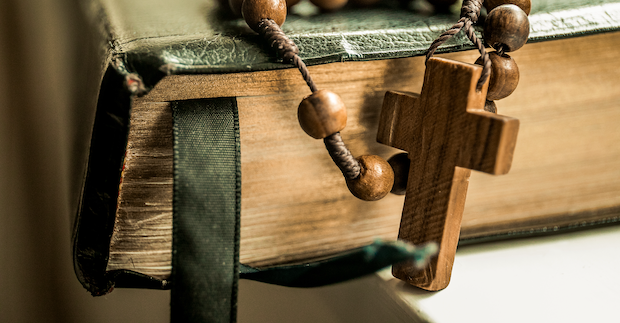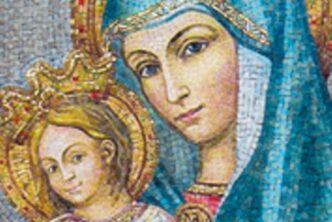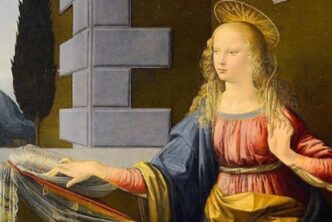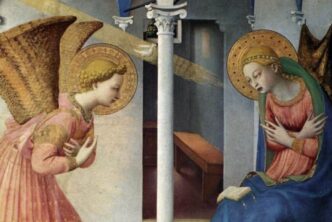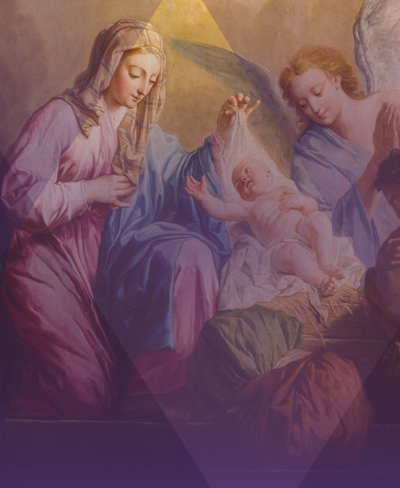
Copy
In Queen Mother: A Biblical Theology of Mary’s Queenship—currently 50% off on Verbum.com—Edward Sri unfolds common approaches taken to Mary’s role as queen and demonstrates how the “queen mother” theme in the Davidic kingdom sheds light on her presentation as heavenly queen in the New Testament and in the Church.
In this excerpt from chapter three, Sri describes several approaches to interpreting Mary’s role in Matthew 1–2.
—
One approach to interpreting Mary in Matthew 1–2 in light of the queen-mother figure underscores how Matthew associates Mary and Jesus with the queen-mother-and-royal-son prophecy of Isaiah 7:14. In 1:23, Matthew portrays Mary as the parthenos whom Isaiah prophesied would give birth to the Immanuel child in Isaiah 7:14 (LXX). Thus, “according to the fulfillment of the prophecy, Mary became queen-mother of the Messiah.” In the Isaian oracle, the queen mother of Immanuel brings forth a child who would ensure the perseverance of the Davidic dynasty. Here in Matthew 1, Mary does the same, bringing forth the Davidic heir who would secure the true Davidic kingdom forever. As Serra explains,
Just as she [the queen mother in Isaiah 7:14] gave birth to a son who guaranteed the continuation of the House of David, so Mary gives birth to a son who will reign forever on the throne of David, in the house of Jacob, in the ‘Israel of God’ (cf. Mt. 28:20; 16:18; Gal. 6:16; 2 Sam. 7:16). One notes the royalty of the two women.
Another approach shows the significance of Matthew frequently placing the newborn King alongside His mother. In fact, some have pointed out how Matthew constantly mentioning the child and His mother together—five times in chapter two alone—could draw attention to Mary’s association with her royal Son in a way that recalls the Old Testament queen-mother tradition. Matthew’s recurring phrase “the child and his mother” has “a Davidic resonance” that might bring to mind the way the Book of Kings repeatedly introduces each new Davidic king alongside the queen mother (as discussed in chapter two). As Branick argues:
Matthew has the powerful figure of the Old Testament gebirah or queen-mother in mind as he repeatedly mentions Mary in this story of the birth and infancy of ‘the newborn king of the Jews’ (2:2). Just as the queen-mother was constantly mentioned in the summaries of the Judean and Israelite kings, so Matthew here repeatedly mentions Mary as Jesus’ Mother (1:18; 2:11, 13, 14, 20, 21; 12:46, 47; 13:55).
One more approach to viewing Mary in terms of the queen-mother tradition in Matthew 1–2 examines her position alongside her royal Son when the magi pay Him homage (Mt. 2:11). As mentioned above, this scene involves a number of Davidic kingdom themes: Jesus is called the “king of the Jews” (2:2). The star guiding the magi recalls the star in Balaam’s oracle about the royal scepter rising out of Israel (Num. 24:17). The narrative centers on the city of Bethlehem, where David was born (1 Sam 17:12) and out of which the future Davidic King would come (Micah 5:2). And the magi bringing gifts and paying the child Jesus homage recall the royal Psalm 72:10–11 (cf. Is. 60:6).
[…]
Matthew clearly places his infancy narrative in the context of the hopes surrounding the Davidic kingdom. Interpreting Mary with those Davidic traditions in mind, we can see that, as mother of the newborn Davidic heir, she could be understood as a queen mother.1
—
For more biblical theological works on Mary, get this month’s free book and other discounted resources.
Editor’s note: This excerpt was slightly adapted for readability.
- Edward P. Sri, Queen Mother: A Biblical Theology of Mary’s Queenship (Emmaus Road Publishing, 2005), 74ff.

